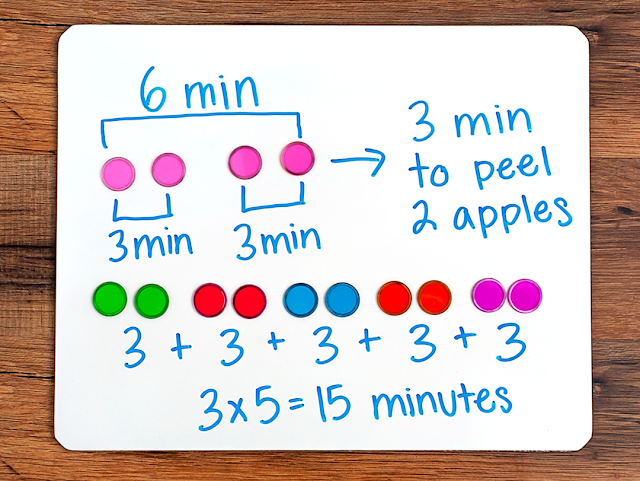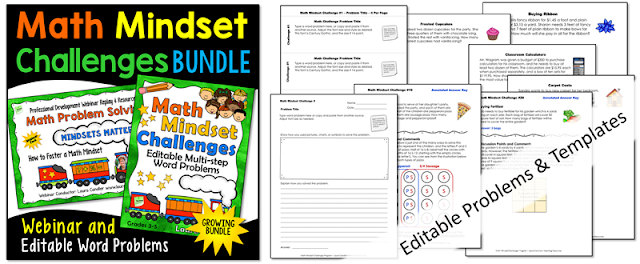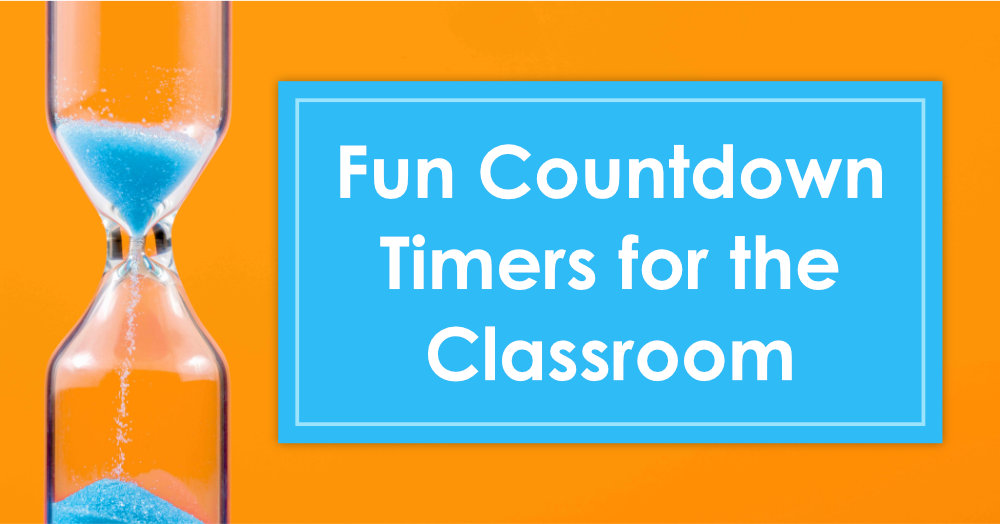Part Two: Crafting the Process
When students struggle in math, it’s often due to their beliefs about what it takes to be successful in mathematics. They believe that some people were born with a gift for math, and anyone who wasn’t born with that gift will never excel in math.
Fortunately, brain research tells us that this belief is nothing more than a myth, and it’s not supported by fact. All students can experience success in math if they are taught in ways that foster the development of a mathematical mindset. This means setting high expectations for all students, engaging them in challenging and interesting math tasks, and providing the right kind of support and encouragement.
One way to foster mathematical mindsets is to replace simple word problems with “rich math tasks.” Rich math tasks provide opportunities for students to work together as they explore a concept or solve a problem. In my webinar, Math Problem Solving: Mindsets Matter, I give examples of rich math tasks and share several strategies for using them with students.
If you’re wondering how to get started with rich math tasks, it’s easier than you might think. The first step is choosing a suitable math problem, and the second step is guiding your students through the problem-solving process. Both steps are equally important, so I’ve decided to tackle them in two separate blog posts.
In my first post, Part One: Crafting the Problem, I explained the difference between word problems and rich math tasks, and I shared 6 tips for creating a rich math task from a simple word problem. In this post, Part Two: Crafting the Process, I’ll share strategies you can use to actively engage ALL of your students in the problem-solving experience.
7 Tips for Facilitating Rich Math Task Problem-Solving
The problem-solving process is just as important as the problem itself, and that process is greatly enhanced with strategies to facilitate active engagement and critical thinking. Here are 7 tips to help you craft the perfect problem-solving experience for your students.
1. Make Time to Go Deep with Rich Math Tasks
Rich math tasks take time, but there’s no doubt that engaging your students in these activities will pay off in the long run. Research shows that a deep discussion about one math problem is far more effective than several shallow discussions about many problems. Fortunately, rich math tasks don’t have to be completed in one session. Instead of devoting an entire math period to one task, you could set aside 10 minutes each day for problem solving. You might assign the math task on Monday and give everyone time to solve the problem on their own. On Tuesday, your students could share and discuss solutions with a partner. Wednesday and Thursday could be devoted to a class discussion about strategies for solving the problem, and Friday could be spent on extension activities.
2. Choose a Method for Showing and Sharing Work
Before you present the first math task to your class, you need to choose a method your students can use to show their work and explain their thinking. Math strategy discussions are an essential part of the task, and everyone needs to be able to SEE and HEAR the solutions being shared.
Individual dry erase boards offer one of the easiest ways for students to participate in the lesson fully. Students are actively engaged as they solve the problem on their own boards, and when it’s time to share, they can hold up their boards to show their work. If you have a document camera, students can place their dry erase boards under the camera to display their work while explaining the solution.
However, dry erase boards can be limiting if the rich math task continues for several days because students won’t be able to save their work for future sessions. If your students have access to digital devices with built-in cameras, they can take a picture of their dry erase boards before erasing them. Another solution is to have students solve the problem on paper on in a math journal.
Padlet, a free online tool, offers another way to share solutions and strategies. It’s easy to set up a free Padlet account and create a math problem solving “wall” for each rich math task. During the class discussion phase of the math task, students can post their solutions on the wall using text and images. The Padlet wall below was created for sharing solutions to the Apple Peeling Challenge #1 problem. For more information about how to use Padlet in math, watch my Math Problem Solving: Mindsets Matter webinar.
3. Defer math strategy discussions until AFTER students work on the task.
I used to teach problem-solving strategies before giving my students problems to solve, thinking it would be helpful for them to be able to choose from a list of strategies. Typical strategies included “Make a Chart,” “Act It Out,” and “Draw a Picture.” Unfortunately, this approach is not supported by the most recent research on mathematical problem solving. As it turns out, it’s actually more effective to save the strategy discussions until AFTER students have tried to solve problems on their own. Kids are far more creative problem-solvers when they aren’t prompted to choose from a list of strategies. They often create highly-unusual but very effective methods of solving problems, and they love sharing their own unique methods with the class.
4. Teach your students how to represent solutions visually.
One strategy that’s important to discuss early in the year is how to represent math problems and their solutions visually. Visual representations can involve pictures, illustrations, objects, charts, or diagrams. I’ll use the two Apple Peeling Challenge problems described in Part One to illustrate my points. Normally, it’s best to focus on a single math problem, but these two problems are related and they work well together to teach an important lesson.
Start the mini-lesson by displaying Apple Peeling Challenge #1: “If it takes 2 minutes to peel 1 apple and 4 minutes to peel 2 apples, how long will it take to peel 10 apples?”
Read the problem aloud and ask your students to solve it. Don’t prompt them to draw the solution or give them any hints. Just walk around and observe them as they work. Some will try to draw the solution, some may write a number sentence, and others will simply write a number for the answer.
Next, choose several students who have solved the problem visually to come to the front of the class, show their work, and explain their thinking. One student might represent the answer visually by drawing 10 circles to represent the apples and count by 2’s (it takes 2 minutes to peel one apple) until they get the answer which is 20 minutes. Another student might create a simple chart like the one below, writing the number of apples above the line and the total minutes below it. A third student might use 10 plastic bingo chips to represent the apples, perhaps using a dry erase marker to label them with the total minutes.
If most students simply wrote the answer or 2 x 10 = 20, ask your class why it might be important to show how you solved the problem, either with simple drawings or with objects. If they don’t know, explain that if you can show the solution to an easy problem using pictures or objects, you’re more likely to be able to solve more difficult problems using similar methods.
To illustrate this point, ask your students to solve Apple Peeling Challenge #2: “Sam needs to peel 10 apples for a pie. If he can peel 4 apples in 6 minutes, how long will it take to peel all 10 apples?”
Because the problem doesn’t state how long it takes to peel ONE apple, this problem is quite a bit more challenging that the first one. Students who solved the first problem using mental math or with a simple number sentence will have difficulty solving this one using the same method. However, if you encourage your students to draw the solution or use objects to represent their thinking, you’ll be blown away with the creative methods they use to solve a problem like this!
For example, examine this visual solution which is modeled with bingo chips. The top row of bingo chips demonstrates that if it takes Sam 6 minutes to peel 4 apples, then it will take him half the time (3 minutes) to peel half the apples (2 apples.) The row of 10 bingo chips represents the 10 apples he needs to peel, and they’re grouped into 5 sets of 2 with the number 3 (minutes) written under each group. Finally, the solution is shown by the number sentence sentence 3 x 5 = 15 minutes.
5. Provide time for students to solve problems on their own before working with others.
Cooperative learning can be a powerful tool for boosting student engagement, but students need opportunities to work independently as well. If students never have time to work alone, they may become dependent on others to do their thinking for them.
Fortunately, there’s an easy fix for this. Simply provide a few minutes of quiet, independent work time after you introduce the math task, and ask your students to try to solve the problem on their own. Remind them to show how they solved the problem so they can discuss it with a partner or team later.
Some students will probably raise their hands almost immediately to ask for help, but stay strong and resist the urge to provide assistance. Jumping in to rescue them before they’ve even tried to solve the problem simply reinforces their belief that they aren’t capable of solving it on their own. The truth of the matter is that if they started to draw the solution instead of waiting for someone else to tell them what to do, they might find that they ARE able to solve it on their own. If some students insist that they have no idea what to do, ask them to reread the problem several times and if they still don’t know what to do, tell them to write a question mark instead of the solution. I can assure you that within a few days of implementing this practice, almost all of your students will attempt to solve the problem on their own, even if they are not confident about their solutions.
6. Use the Share-Share-Compare strategy to facilitate productive math partner talk.
After everyone has tried to solve the problem independently, the next step is for them to discuss their solutions with a partner. This will prepare them for the upcoming class discussion. I suggest that you assign partners yourself rather than letting your students choose partners. After you pair up your students, ask them to show their work to their partner and explain their solutions.
If your students don’t have prior experience with how to talk about math, you’ll need to guide them through the process the first few times. If you don’t, your students are likely to just compare their answers without discussing strategies. If they have the same answer, they won’t bother to discuss HOW they solved the problem. If their answers are different, the stronger student will point out the other student’s error, and his or her partner will correct it without understanding why it was wrong.
You can avoid these problems entirely by implementing Share-Share-Compare, a simple cooperative learning strategy to facilitate math partner talk. I described this strategy in detail during the Math Problem Solving: Mindsets Matter webinar, and you can see the steps illustrated on the right. This mini-poster is one of the resources included with that webinar or the one of the bundles that includes the webinar.
Before you begin Share-Share-Compare, assign A/B Partners, and ask them to sit side by side. Have them place their math papers or dry erase boards face down in front of them.
To begin the activity, Partner A shares by showing and explaining his or her work to Partner B. Partner B listens and asks questions. Next, Partner B shares by explaining how he or she solved the problem, and Partner A listens. Finally, both partners comparetheir work and discuss any differences in their methods. If they solved the problem using the same strategy, challenge them to try to find another way to solve it.
As your students are working, walk around and observe the different methods that are being used to solve the problem. Make a note of the different strategies your students used because this information will be helpful during the class discussion.
6. Wrap up with a strategy-focused, high-energy class discussion.
The final step is a class discussion to share and discuss various problem-solving strategies. The best discussions are high-energy, fun experiences during which students are eager to share their strategies, analyze other methods, and express appreciation for each other’s creative solutions.
To begin the class discussion, display the problem and read it aloud. Ask for student volunteers who would be willing to show their work and explain their solutions to the class. When you choose the first volunteer, select someone who has drawn the solution or modeled it with objects because it will be easier for the other students to understand the solution. Invite the student to come forward to show and describe how the problem was solved.
If you have a document camera, the student can place his or her dry erase board, math journal, or paper under the camera so that everyone can see how the problem was solved. If you don’t have a document camera, you could take a picture of the student’s work and upload the image to a Padlet wall. Project the problem onto a screen for the whole class to see, or have students access Padlet from a digital device. If you use Padlet this way, I suggest that you upload one solution at a time to keep your students focused on the strategy that’s being shared.
If the student shows his or her solution, but doesn’t explain HOW the problem was solved, you may need to prompt the student to elaborate. For example, if the solution below was shared, you might ask how the student discovered that it took Sam 1 1/2 minutes to peel each apple.
After the first volunteer finishes speaking, don’t confirm that the answer is correct or say that it’s incorrect if the work includes errors. If it’s not correct, the correct answer will be found by the end of the discussion. Simply thank the student and ask if your class has a question about how the problem was solved. On the other hand, if student in the class discovers an error and asks about it, you should facilitate a discussion about the perceived error without confirming the answer.
If no one challenges the answer and your students want to know if it’s correct, just smile and say, “We’ve only looked at one way to solve the problem. To verify the answer, we need to solve it a different way to see if we get the same answer. Did anyone solve this problem a different way?”
If anyone says that they solved the problem a different way, ask him or her to come forward to share his or her solution. After that student finishes speaking, ask the class again, “Can we find another way to solve this problem?” Continue this process until everyone who wants to share a new strategy has had a chance to do so. If you don’t have time to finish in one session, ask your students to continue thinking about the problem and conclude the discussion the next day.
Before you wrap up the discussion for this problem, be sure to confirm the correct answer, especially if any answers shared earlier in the discussion were incorrect. After the solution has been verified in several ways, ask your students, “Do we all agree that ______ is the correct answer?”
The first time you facilitate a rich math class discussion, your class may only find a few ways to solve the problem. However, as they become more creative in their problem-solving approaches, they may discover 5 or 10 ways to solve the problem! When that happens, it can become difficult to keep track of the different strategies and to remember who shared each one.
Padlet offers one of the easiest and most effective ways to deal with this problem. Simply take a snapshot of each student’s solution and upload it to the Padlet wall you created for the problem. Label the post with the student’s name, and ask him or her to complete it by entering a written explanation.
To show you how Padlet works, I created the math problem wall above for the Apple Peeling Math Challenge #2. I uploaded three examples of how students might solve the problem and how their work could be displayed and shared on Padlet. If you use this apple peeling challenge problem with your students, I’d love for you to add any new solutions to the wall. Click over to the Padlet Apple Peeling Challenge #2 Wall, upload an image of the solution and enter a written description.
If you have time, you can extend the rich math task by asking your students to create their own related math problems. For example, some students might create a similar problem that uses different numbers, perhaps even fractions or decimals. Some students may change other elements of the problem, changes that would require an entirely different method for solving it. To share the new problems with their classmates, students could post their problems on the Padlet wall or write them on index cards to be tacked to an “early finishers” board.
To learn more about how to foster mathematical mindsets in your students, check out my webinar, Math Problem Solving: Mindsets Matter, or one of my problem solving bundles. The Math Mindset Challenges Bundle shown below includes the webinar plus a collection of editable word problems and templates to get you started. If you’re looking for something more comprehensive, take a look at my Math Problem Solving Mega Bundle which also includes all 4 Daily Math Puzzler books.
Rich math tasks are exciting for kids, even those students who lack confidence in their mathematics ability. In fact, these students often turn out to be the most creative problem solvers in your class! When you take steps to foster mathematical mindsets in your students, you’ll be amazed at what happens. If you haven’t been using rich math tasks, I hope these tips will help you to jump in and get started now!
















